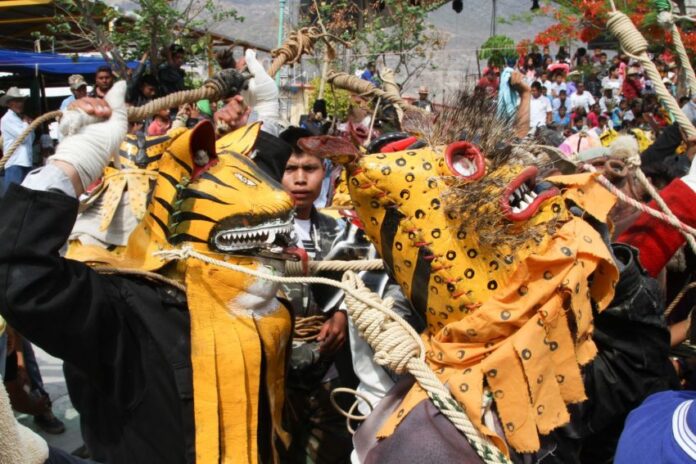Across Mexico, you can still find annual traditional rituals to ensure that crops will have rain. One of the most famous of these rituals takes place in Zitlala, a small community in the southern state of Guerrero, where residents annually perform a centuries-old ceremonial battle in jaguar costumes in exchange for rain.
Called either Pelea de Tigres or Pelea de Jaguares (Fight of the Tigers or Fight of the Jaguars), the ritual is believed to be hundreds of years old.

Rooted in pre-Columbian practices and then fused with Catholic influences, the ceremony is yet another example of the religious syncretism that took place in Mexico during Spanish colonization, which also explains why the ritual today is often referred to as the fight of the tigers: jaguars, endemic to Latin America, were not familiar to the Spanish colonists.
“Every year we ask God for help in bringing enough water for our crops,” one of the participants says in this video. “Some participants fight, and some others don’t fight. Some fight until their bodies can’t stand it anymore.”
The ceremony, which takes place every year between May 2 and 5, sees participants dress up as jaguars, wearing a yellow suit with black polka dots and a mask. With a rope that is bathed in mezcal to make it hard, participants whip their opponents, whose spilled blood serves as an offering to Tláloc, the Mexica god of rain.
The jaguar has always played a significant role in just about all prehistoric civilizations in Mesoamerica, appearing as an important figure in the reliefs and sculptures of temples and palaces.
With music and dance, participants and attendees walk through the town’s streets until they reach the battle site.
Contenders fight fiercely for five to 15 minutes, following a Nahuatl proverb of the region that says, “The more blood the tigers shed, the more rain there will be for the germination of the seeds.”
This video examines the annual “tiger” battle ritual for rain in Zitlala, Guerrero.
After the battle ends, winners and losers remove their masks to identify themselves to their opponent.
“At the end of the fight, we’re still friends as always. It’s an offering to the god Tlaloc, so that he gives us good rain, and we do it with that purpose, not out of resentment or hatred,” Arnulfo, one of the participants, points out.
To engage in battle, participants must follow some strict rules, to compete effectively. These include preparing for a month in advance, visiting their ancestors, speaking to the masks to embody the spirit of a jaguar and purifying their souls with mezcal.
This year’s ceremony will take place May 5.
With reports from EFE
